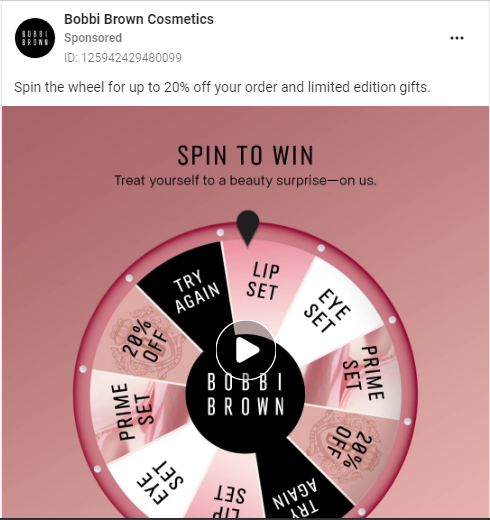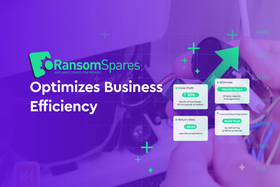The Ultimate Guide to Effective E-Commerce Ads
Published December 16, 2021.

Not only do we now have the capability to create personalized, targeted, and interactive ads that consumers can literally carry around with them on their mobile devices, but we also have the unique ability to precisely measure the results from these eCommerce ad campaigns. Let’s jump right into the beauty of this online world where we live, work and shop, and learn how every eCommerce store owner can get the absolute best return from their eCommerce advertising spend.
What Are E-Commerce Ads?
Ecommerce ads are paid content used by e-commerce sellers to market and sell their products online. The advertiser (in this case, the e-commerce business) will pay a publisher such as Facebook, Google, or Pinterest for example, to display their ads.
Payment is made from the advertiser to the publisher based on predetermined metrics such as:
- Placement – the advertiser pays the publisher a placement fee for hosting the ad on their site
- Impressions – the advertiser pays the publisher a rate per number of impressions or times their ad is viewed
- Clicks – the advertiser only pays the publisher each time their ad gets clicked on
Best Techniques for E-Commerce Ads
There are means and ways to improve your e-commerce ads including implementing one (or preferably more) of the following strategies:
1. Personalization
Ecommerce ad personalization involves using consumer data to segment and customize the advertising funnel from eCommerce display ads creation to the landing page. By personalizing ads, eCommerce businesses can cater to their customer’s needs and in doing so, increase not only their conversion rate, but also the likelihood of getting customer recommendations and positive reviews.
2. Mobile Optimization
It’s a proven fact that 80% of consumers use their mobile devices to assist in the shopping process, regardless of whether or not they’re even shopping online. From reading reviews to price comparisons, mobile is an integral part of the shopping experience. To be competitive and top-of-mind, mobile optimization is essential to creating an impression in the consumer’s mind/. And for customers that purchase online, xxx% will buy on their mobile, so a store needs to be mobile-friendly. To make a store mobile friendly you need to:
- Expedite site loading time
- Make the site user-friendly for mobile
- Optimize images and videos for mobile
- Lighten the content load
- Simplify your checkout process
3. Post-click Optimization
Once the eCommerce website advertisement has been optimized, many eCommerce sellers forget one crucial aspect – what happens after the click?
Potential customers have been lost too many times to an inferior post-click experience. Just say you see an ad for an item you’ve been searching for. The product is relevant and the ad is enticing so you click. But you don’t buy. What went wrong? After you clicked on the ad, it took you to a very confusing landing page that didn’t relate to the ad you’d liked and clicked on.
Many e-commerce marketers forget about a crucial part of the advertising process – the post-click user experience. Neglecting this can lead to wasted advertising dollars because even the best ad is doomed to fail if there’s no segmented, relevant landing page containing the right information with a clear, direct call-to-action.
4. Conversion Rate Optimization
A store’s conversion rate is the number of consumers who visit a website or landing page, or who view an ad, compared to the number of consumers who actually follow through the call-to-action and achieve the goal of the e-commerce advertisement. This goal could be any number of things including purchasing a product or service, creating an account, and so on.
There are ways to optimize your ad conversion rate. One of these ways is to A/B test your ad content. This entails creating and launching two different versions of the same ad campaign, with different design and/or content and then seeing which ad version performed best.
5. Omnichannel Targeting and Retargeting
When it comes to selling products online, e-commerce sellers have many channel options to choose from including Facebook, Instagram, Google, Pinterest, TikTok, Snapchat, and YouTube. But why choose one when you can have ‘em all?
PIcture this. A shopper wants to buy gym leggings online. She Googles and comes across your store’s Google ad placement. She clicks the ad but drops off. Now, the next time she’s on Instagram, your e-commerce retargeting ad for those same leggings pops up. She now recognizes the ad and product and clicks into the ad, hopefully making the purchase. This omni-channel experience doesn’t need to end there. The next time your customer is on Facebook, she could be targeted with your ad promoting tops to match the leggings she’s just purchased from your store. And so the cycle of customer retention continues.
6. Artificial Intelligence
Chatbots are becoming the virtual salesperson, but even more than that, bots have the artificial intelligence to act as personal shopping consultants and can even make product recommendations based on the shopper’s needs, demographics and more. You can shop directly through your social media platform, for example you could get product recommendations from a Facebook Messenger chatbot and even make your purchase directly through Facebook.
7. Social Commerce
Companies do more than just advertise on social media channels. Now there’s an opportunity to actually sell their products to consumers without the consumer having to leave the comfort of the channel they’re already in. This is known as social commerce and is a booming trend across many social media platforms, with the number of US social commerce consumers having increased by 25.2% to $80.1 million in 2020.
Most Effective Platforms for E-Commerce Ads
Data by Become shows that almost 50% of the 4,000 e-commerce store analyzed use Facebook and Instagram for their e-commerce advertising, while 22% use Google Ads. Only 8% of these businesses use Pinterest for advertising, 7% use TikTok and 6% use Snapchat Ads.
Facebook Ads
The 2020 data from Facebook shows that the Facebook monthly active users have reached 2.8 billion people worldwide, and daily active users are at 1.84 billion. This includes users of all Facebook’s platforms including Facebook and Instagram.
Not only is the Facebook audience wide, but it’s also varied demographically, giving advertisers access to the right audience for targeted, segmented advertising, making it a powerful Facebook e-commerce strategy.
Instagram Ads
Another popular advertising platform, Instagram gives advertisers the opportunity to create image-based ads and use Instagram stories to promote their products and services in a natural way that connects with the target audience.
Instagram is also a very brand-focused social platform – 81% of Instagram users research products and services through the platform and, since Instagram increased emphasis on social commerce, 130 million users click on Instagram shopping posts each month. This gives advertisers a highly active, high-intent audience to which to sell their products.
Always a firm favorite, with 22% of BeProfit users using this platform, Google Ads e-commerce enables highly targeted advertising to consumers who are actively searching for your product category, your competitors, or even your product. It’s also a good way to optimize your ROAS as you can elect to pay only if someone clicks on your ad, not just based on ad views or impressions.
Pinterest Ads
With 71% of Pinterest users being women, the platform having over 416 million monthly users, and 90% of weekly Pinners making buying decisions on Pinterest, it goes without saying that it’s a highly effective ad platform for e-commerce sellers that target this audience. Pinterest ads cost is based on your objective – if your goal is to increase brand awareness, then you would pay per 1,000 impressions (impressions are the number of times that your promoted pin is seen), while if your goal is to make sales, then you will pay per engagement or the number of times your campaign is clicked on.
TikTok Ads
A newer advertising platform, TikTok Ads offers a unique opportunity to promote your products in an organic, natural way to a young, engaged audience. You could even work with an already established TikTok influencer to slip your product promotion into their already existing, popular TikTok feed. The TikTok ads pricing is a little less competitive than the other platform and begins at the cost of $10 per CPM (cost per 1000 views).
Snapchat Ads
Another option to target a younger audience, Snapchat boasts 186 million daily users. This platform offers the capability to create engaging, interactive ads where consumers swipe up or tap for site visits or purchases, or even use customized, branding filters and AR lenses for brand awareness advertising. The exact Snapchat ads cost depends on a number of factors including your budget, your objectives and the duration of your campaign. The minimum daily amount you could get away with spending on Snapchat ads is $5.
Examples of Inspiring E-Commerce Ads
Shein
Image Source: Shein Facebook Ad Library
In this example, Shein makes use of Facebook carousel ads to promote different items in one ad. Each item has its own call-to-action (CTA) button, and targeted Facebook users are enticed to scroll through the panel of images. Shein emphasizes their free return policy in the very first line of the ad description.
Bobbi Brown Cosmetics
Image source: Bobbi Brown Facebook Ad Library
This video Facebook ad by Bobbi Brown engages consumers with its interactive and fun approach. The video shows what customers can expect from the landing page and they’re enticed to spin the wheel and stand a chance of winning a beauty prize or a big discount. The best e-commerce ads are those which drive immediate action and a chance to get rewarded is a big incentive to click.
Measuring and Optimizing Your E-Commerce Ads
Before you can make sure you have the most effective e-commerce ads possible, you need to measure your ad performance. What you measure depends on your goals. If your primary goal as an online seller is to sell more products, you’ll want to measure metrics related to that goal, such as your conversion rate, customer acquisition cost (CAC), customer lifetime value (LTV), and so on.
You can track and monitor your store’s most important metrics through a profit calculator dashboard app such as BeProfit profit tracker. You can assess the performance of your chosen ad platforms or even individual ad campaigns to see which are most effective. Once you know how your ads are performing, you can reassess and focus only on the ads that are performing best, with the optimal return on ad spend (ROAS).
Once you know which ad platforms and campaigns perform best, you can direct your advertising budget into those effective channels.









